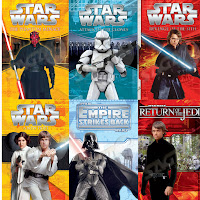
The first short film I watched for my independent study was “Mister Green” by Greg Park. “Mister Green” is a preferred reading; the plot is encoded by producers to sets a parallel regarding change through delicate and political events. The plot elaborates upon a variety of procedures that are vital in today’s society; global warming is present and has moved from theory to fact. Critic David Morley explores the idea that “meaning is considered to be what audiences make of the text, taking away most of the power of the producer and the text”. This reinforces upon the suggestion that texts have many different possible meanings which are interoperated mainly by the audience. Within “Mister Green” it is the audiences who do in fact inchoate the initial theme and enable responses regarding their interpretations of the specific media text. With this in mind, there is a direct link to the point mentioned above that “Mister Green” is a preferred reading.

After watching the slightly complex and heavy “Mister Green” I followed by watching and analysing the poignant and optimistic “The Other Side” by Amyn Kaderali. The film opens in a destitute, deserted town in the year of
“Plastic Bag” by Ramin Bahrani focuses on a story line with two interpretations. The original plot includes the story of a literal plastic bag and as the film develops, so does the audiences relationship with the bags journey and where abouts. This short film also appeared to have a more oppositional hegemonic position, due to this as an audience you begin to question the actions of the bag’s owner and follow in depth in hope of a "happy ending". The expedition of the plastic bag has the voice of Werner Herzog. It is obvious that every viewing environment would scrutinize this film in diverse ways. This reinforces the idea that the producers have tried to look at the Uses and Gratifications to see what appeal to audiences and whether the plot line had potentional.
 The final short film I watched was “Celebration” by Daniel Stedman. The film was only minutes long and primarily focused on the relationship with the mother and child. Daniel Stedman follows the stereotypical role of the mother and son and demonstrates this through chosen character movement. With very limited dialogue the production has a noticeably negotiated reading, meaning readers will adapt the preferred meaning so it fits with what we as the audience want it to. As the film comes to a close, the message is delivered to the audience that the boy is a homosexual, this then obliterates any stereotypical images presented and explores a hidden path. For audiences, this can be seen as a perilous method, but in this case it can be affective. The message audiences see and the message that the producers intend on us seeing appears to be decoded in most cases throughout this short film. The mode of address of the film is from the boy’s point of view and his journey to telling a selection of people about his sexuality and the film terminates with them being happy with his decision and applauding him.
The final short film I watched was “Celebration” by Daniel Stedman. The film was only minutes long and primarily focused on the relationship with the mother and child. Daniel Stedman follows the stereotypical role of the mother and son and demonstrates this through chosen character movement. With very limited dialogue the production has a noticeably negotiated reading, meaning readers will adapt the preferred meaning so it fits with what we as the audience want it to. As the film comes to a close, the message is delivered to the audience that the boy is a homosexual, this then obliterates any stereotypical images presented and explores a hidden path. For audiences, this can be seen as a perilous method, but in this case it can be affective. The message audiences see and the message that the producers intend on us seeing appears to be decoded in most cases throughout this short film. The mode of address of the film is from the boy’s point of view and his journey to telling a selection of people about his sexuality and the film terminates with them being happy with his decision and applauding him.The following link opens up a variety of power point presentations based upon the class notes on audience theory. They all include different opinions and critic evaluations, the majority of the notes have been simplified by students so we ultimately get a better understanding of the theory and all that comes with it.
audience-theory-student-powerpoints.
audience-theory-student-powerpoints.



